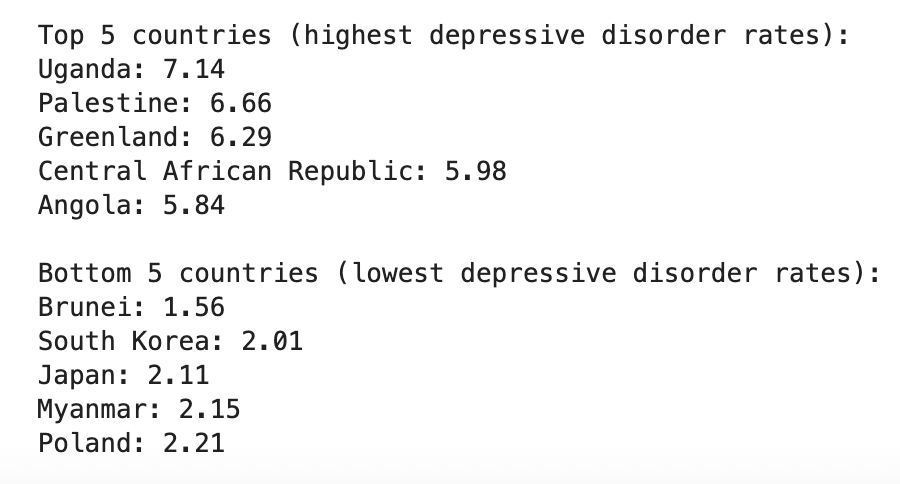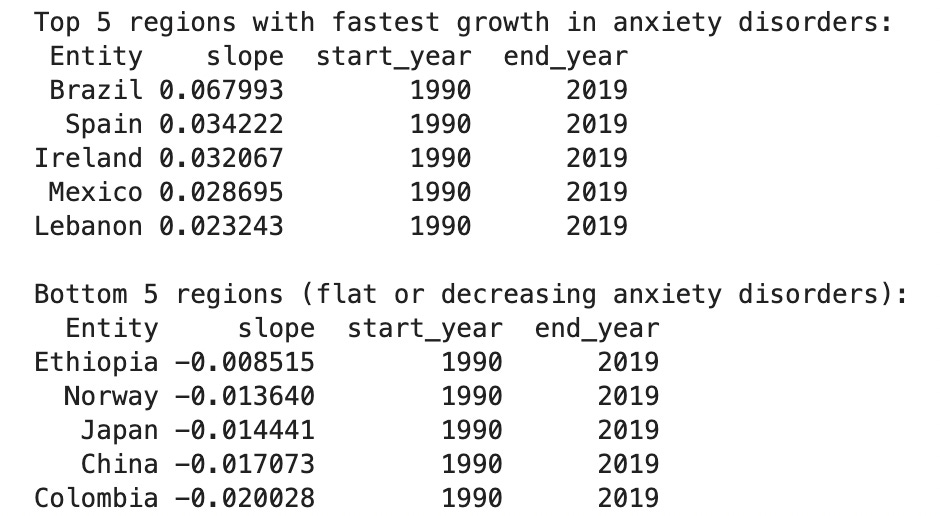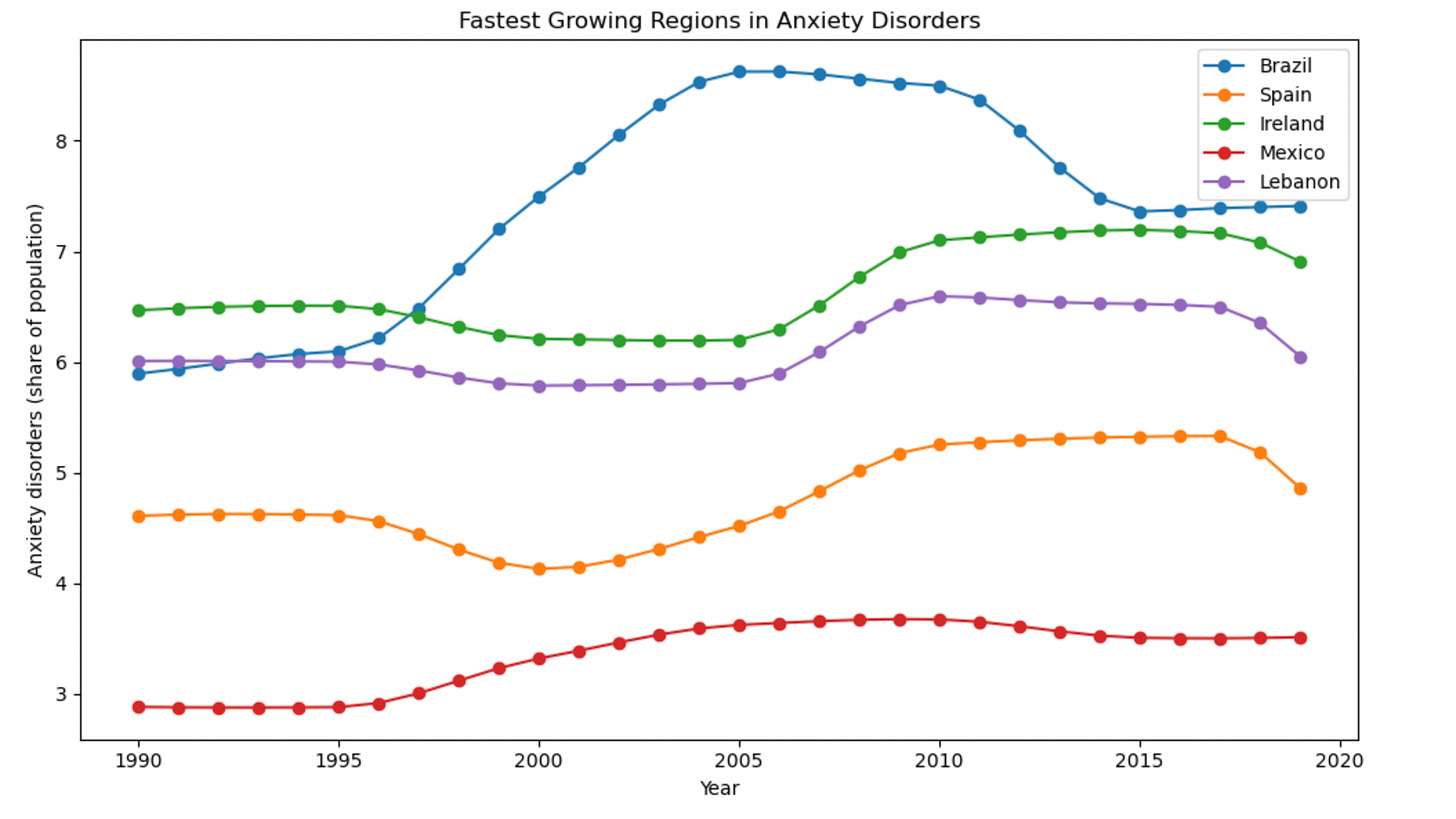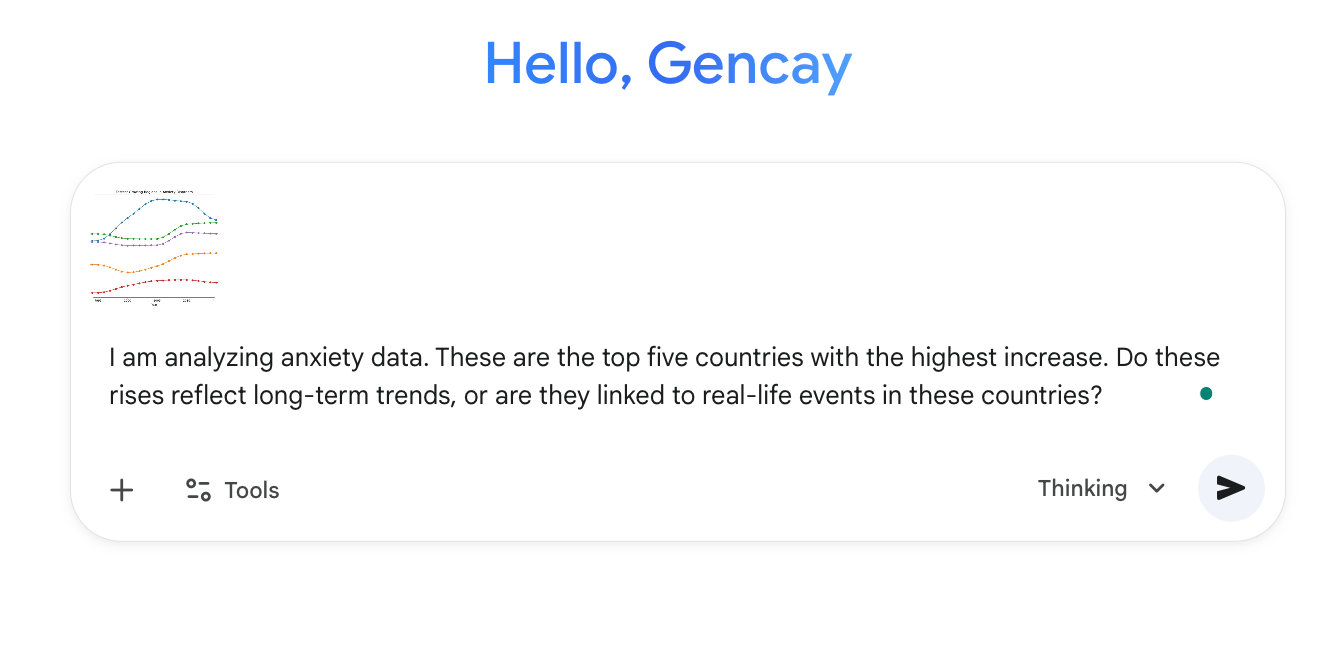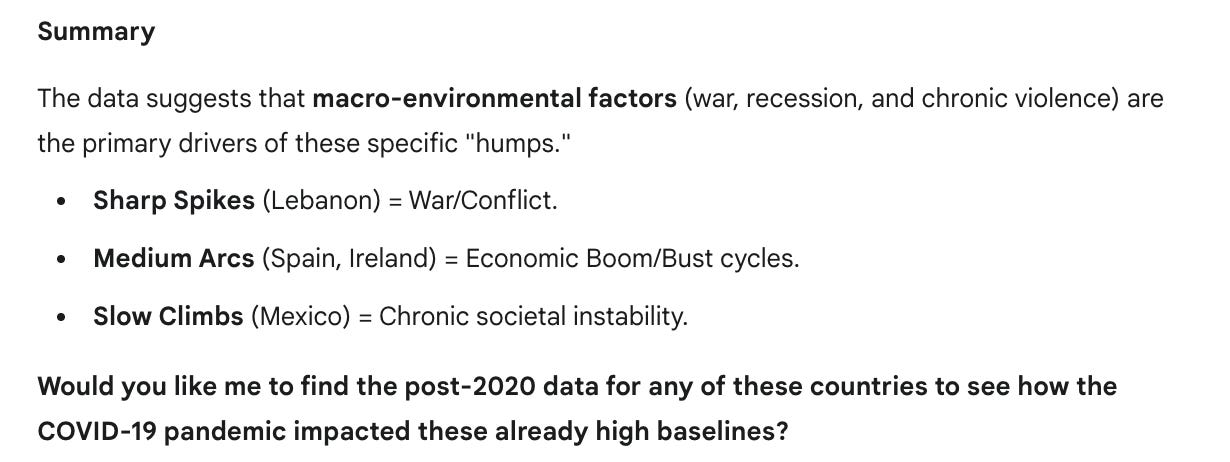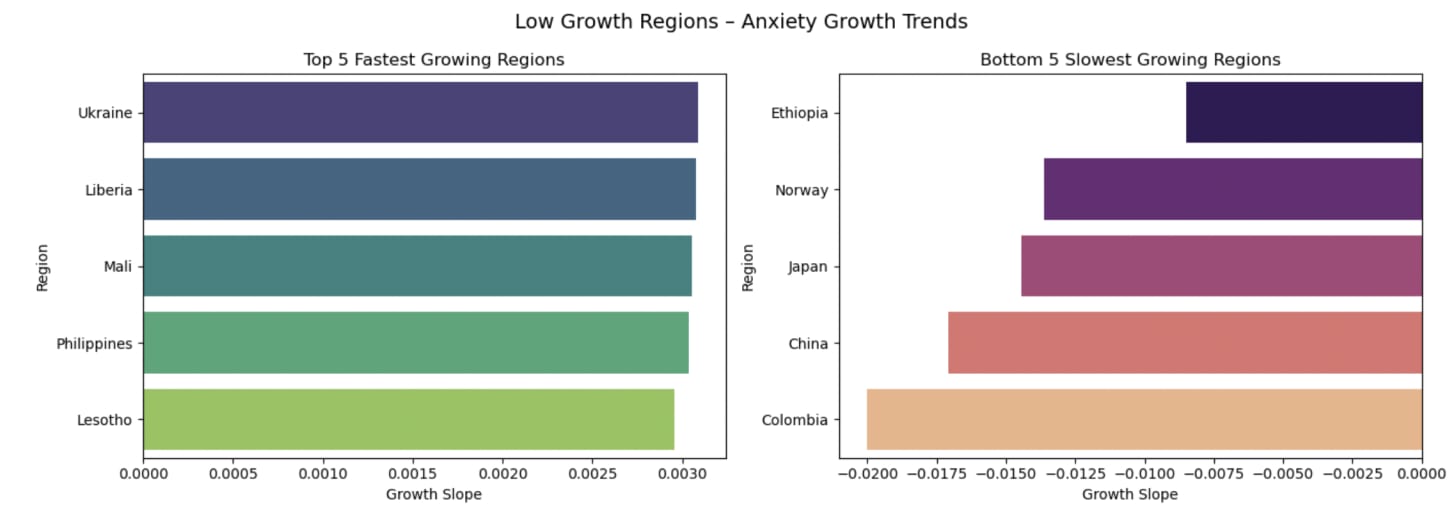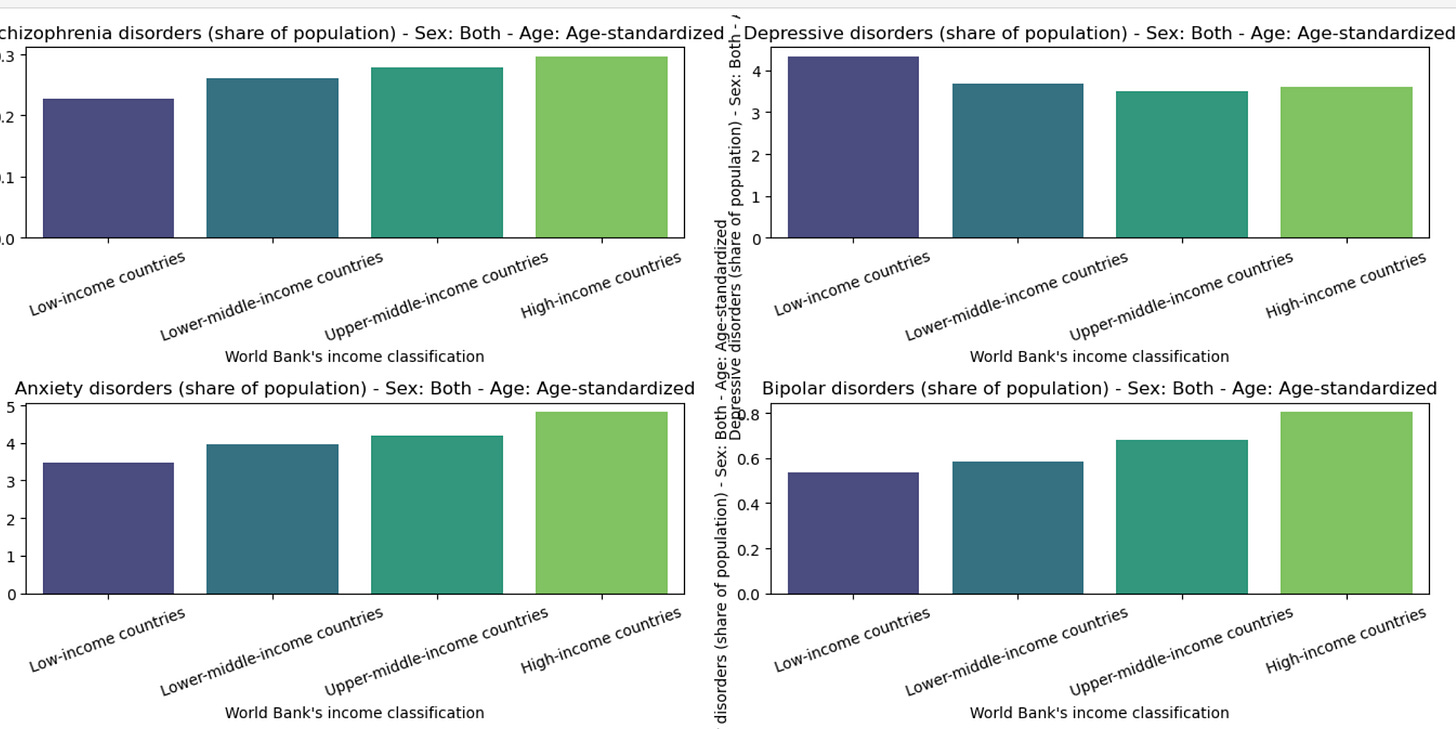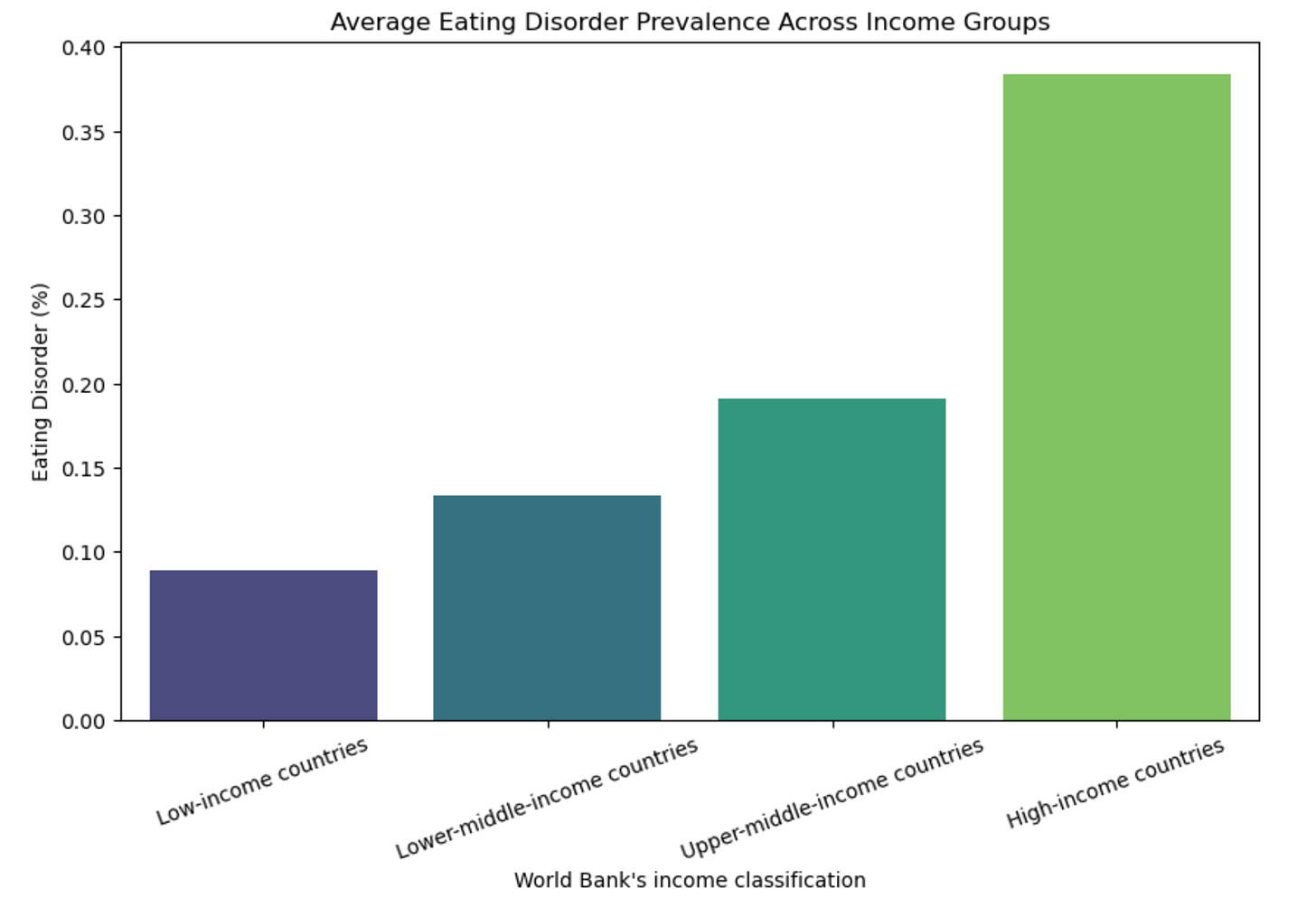Data Project 13, Can Money Buy Happiness?
Analyzing Global Mental Health Trends: How Conflict and Economy Shape Our Minds
For decades, people have said that mental health is connected to eating habits. I take it one step further, because financial status and war likely play a role, too.
The questions that we are trying to answer using the data are:
Which countries show the strongest rise in depressive disorders over time
Which regions show the fastest growth in anxiety disorders over time?
Does a country’s income level affect the prevalence of eating disorders?
As always, we’ll do this project using the MARS method. You can see the prompts, datasets, code, and the full report in the gDrive available to our paid subscribers.
Which countries show the strongest rise in depressive disorders over time
The data we used was collected by conducting interviews over the phone.
Here, we used Statistics-Anova to detect which countries have the most mental disorders.
In short, ANOVA compares the means of different groups to make a decision.
Using correlation analysis, we found that there is a strong relationship between mental disorders and eating disorders.
For instance, major depression and anxiety disorder correlate at 0.88.
This means that if 10 people have major depression, about 8 of them also have anxiety.
Using machine learning, we clustered countries into low, high, and medium levels of depression.
Which regions show the fastest growth in anxiety disorders over time?
When I first think about anxiety, the first thing that comes to my mind is war and the economy.
To find a correlation, I used a simple ML technique called Linear regression. Here is the result.
Let’s see the result visually.
But can this be related to the real-life events? Let’s use AI to see that.
Let’s see the output of AI.
Just like it's supposed to be, here we can see the correlation better.
One of the fastest-growing regions is Ukraine, and unfortunately, this is related to the war between Ukraine and Russia.
Does a country’s income level affect the prevalence of eating disorders?
Now I am asking the million-dollar question: Can money buy happiness? Let’s see.
Other than depression, which decreases with high income, all mental issues increase as the income increases, which is interesting. But there is a catch, which I’ll explain in a bit.
I merged the economy dataset with the mental disorder dataset and tried finding an answer to see if there is a correlation between eating disorders and income.
This is really interesting because, as income decreases, eating disorders also decrease.
But these eating disorders and mental disorders, also might not be detected as incomes decrease because people often skip medical help, avoid screenings, or cannot access proper mental-health services.
Final Thoughts
All code and the full report are available in the shared Drive for paid subscribers.
We’ll meet again on Sunday to take the pulse of AI. I’m especially looking forward to this week’s tools, driven by the Gemini-3 wave, and I’ll share a prompt that can genuinely save hours of work.
Thanks for reading this week’s report.



